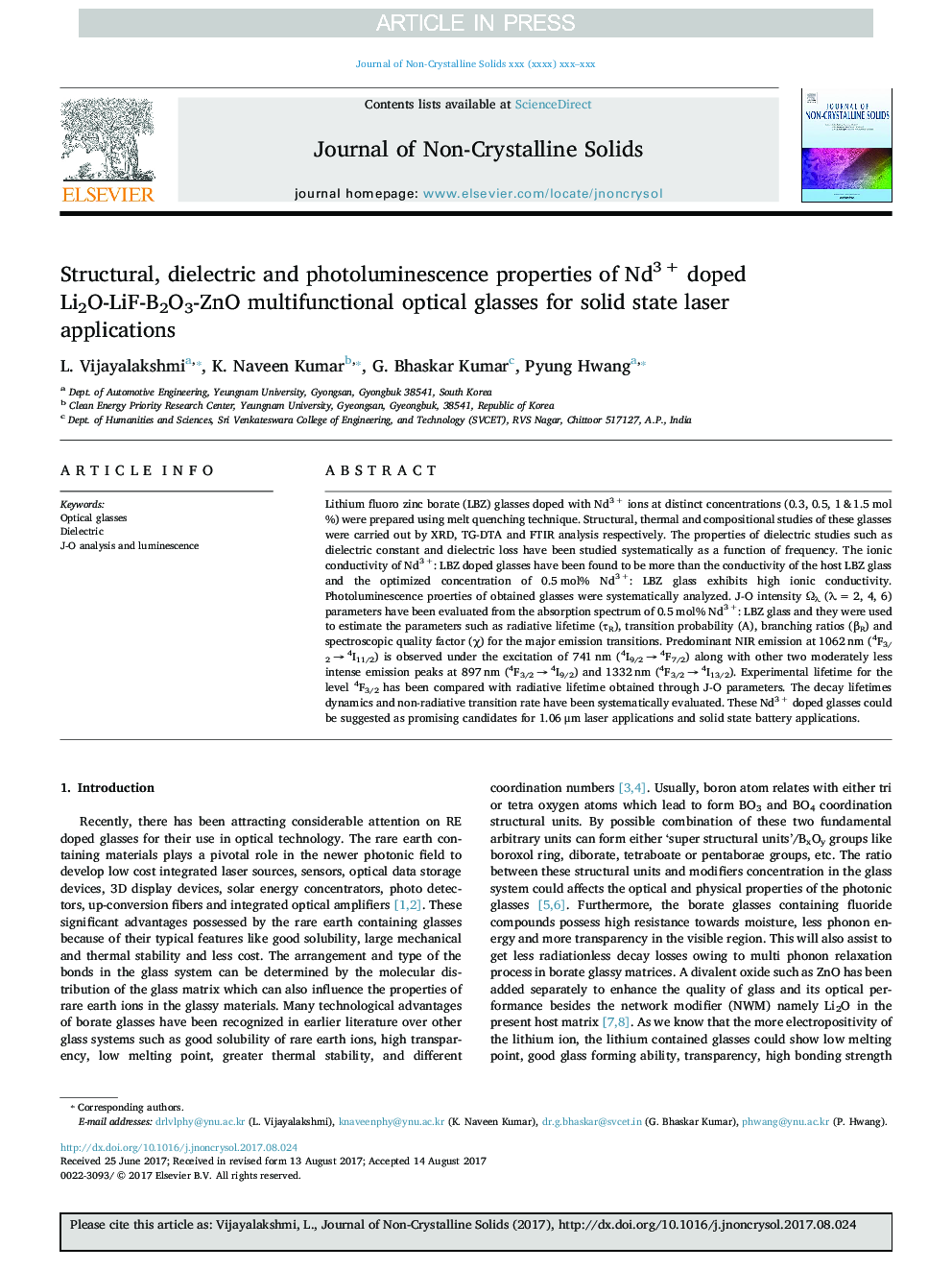| Article ID | Journal | Published Year | Pages | File Type |
|---|---|---|---|---|
| 5441025 | Journal of Non-Crystalline Solids | 2017 | 10 Pages |
Abstract
Lithium fluoro zinc borate (LBZ) glasses doped with Nd3 + ions at distinct concentrations (0.3, 0.5, 1 & 1.5 mol%) were prepared using melt quenching technique. Structural, thermal and compositional studies of these glasses were carried out by XRD, TG-DTA and FTIR analysis respectively. The properties of dielectric studies such as dielectric constant and dielectric loss have been studied systematically as a function of frequency. The ionic conductivity of Nd3 +: LBZ doped glasses have been found to be more than the conductivity of the host LBZ glass and the optimized concentration of 0.5 mol% Nd3 +: LBZ glass exhibits high ionic conductivity. Photoluminescence proerties of obtained glasses were systematically analyzed. J-O intensity Ωλ (λ = 2, 4, 6) parameters have been evaluated from the absorption spectrum of 0.5 mol% Nd3 +: LBZ glass and they were used to estimate the parameters such as radiative lifetime (ÏR), transition probability (A), branching ratios (βR) and spectroscopic quality factor (Ï) for the major emission transitions. Predominant NIR emission at 1062 nm (4F3/2 â 4I11/2) is observed under the excitation of 741 nm (4I9/2 â 4F7/2) along with other two moderately less intense emission peaks at 897 nm (4F3/2 â 4I9/2) and 1332 nm (4F3/2 â 4I13/2). Experimental lifetime for the level 4F3/2 has been compared with radiative lifetime obtained through J-O parameters. The decay lifetimes dynamics and non-radiative transition rate have been systematically evaluated. These Nd3 + doped glasses could be suggested as promising candidates for 1.06 μm laser applications and solid state battery applications.
Keywords
Related Topics
Physical Sciences and Engineering
Materials Science
Ceramics and Composites
Authors
L. Vijayalakshmi, K. Naveen Kumar, G. Bhaskar Kumar, Pyung Hwang,
